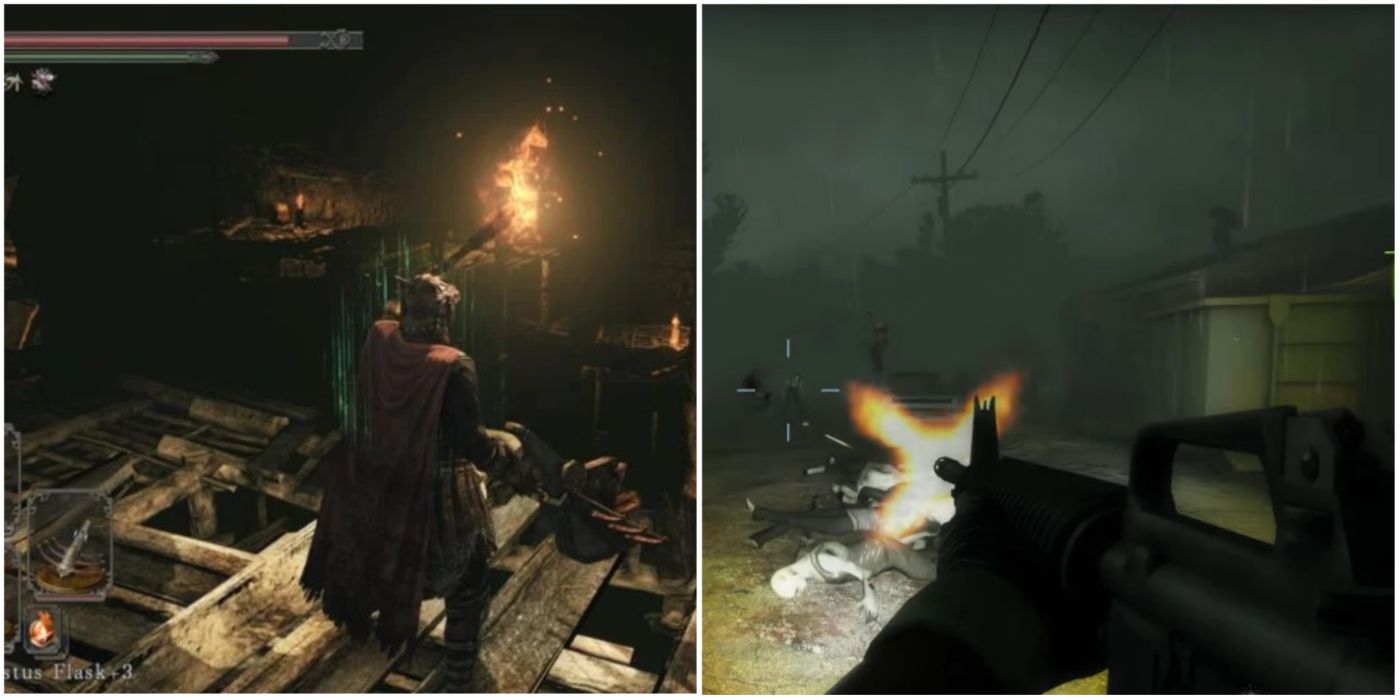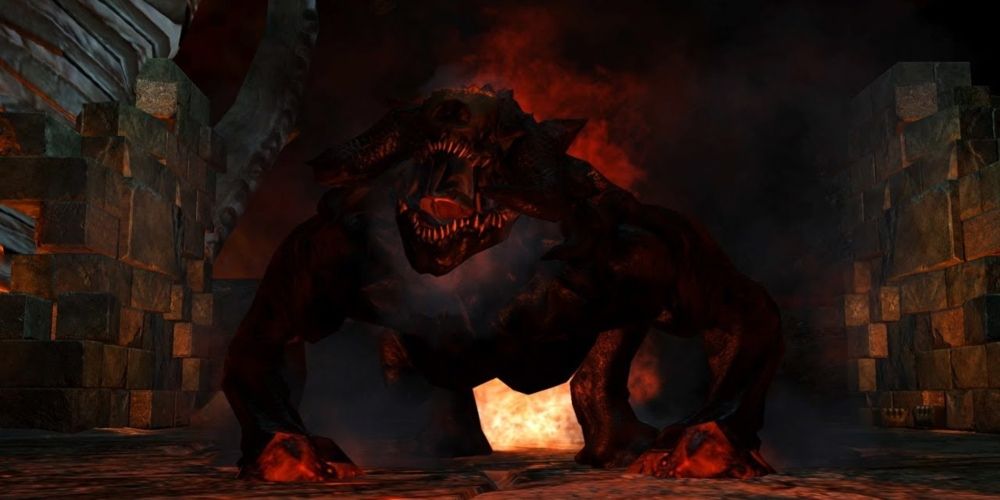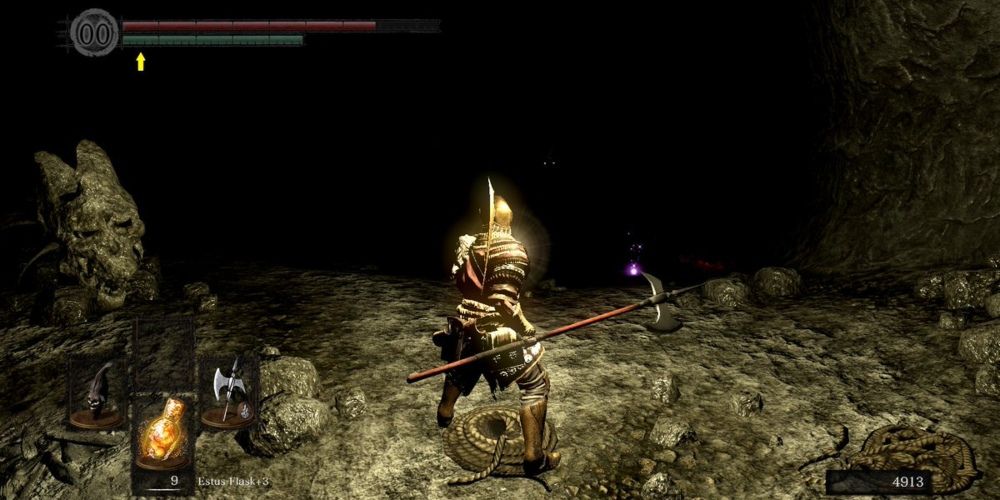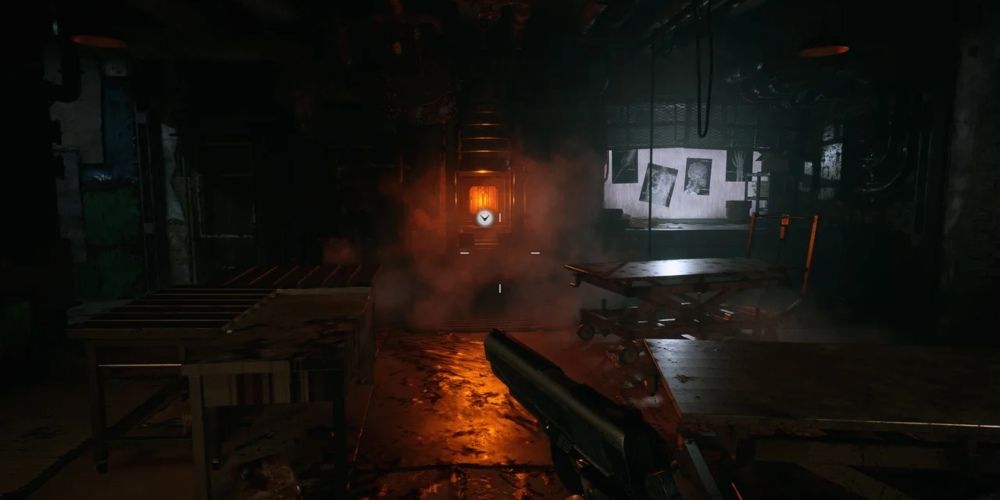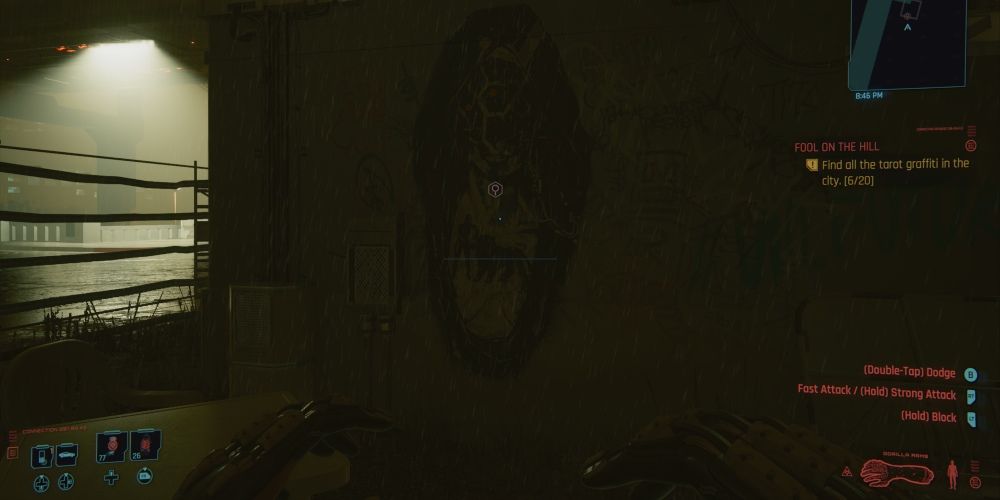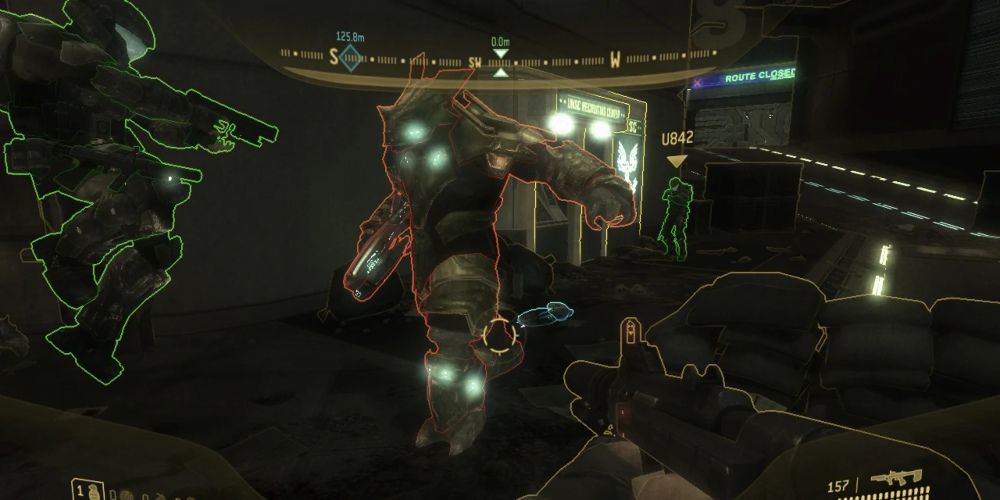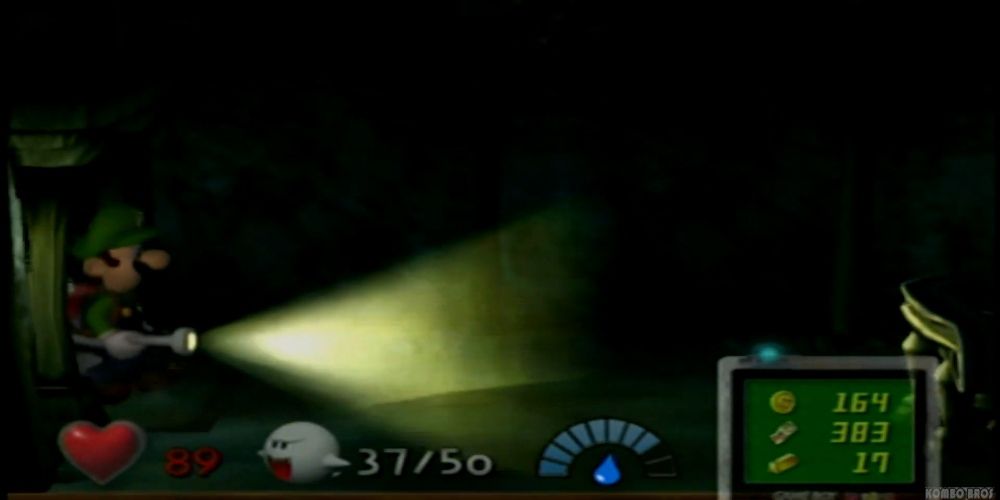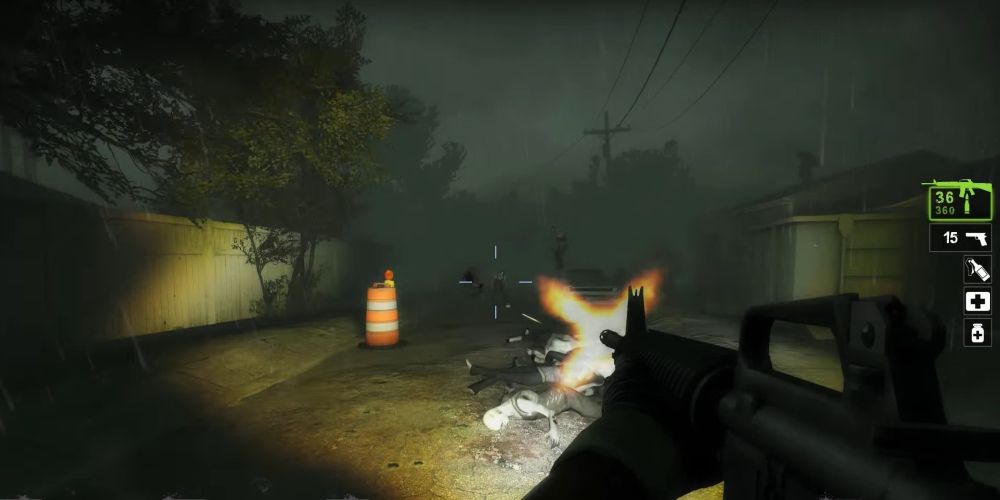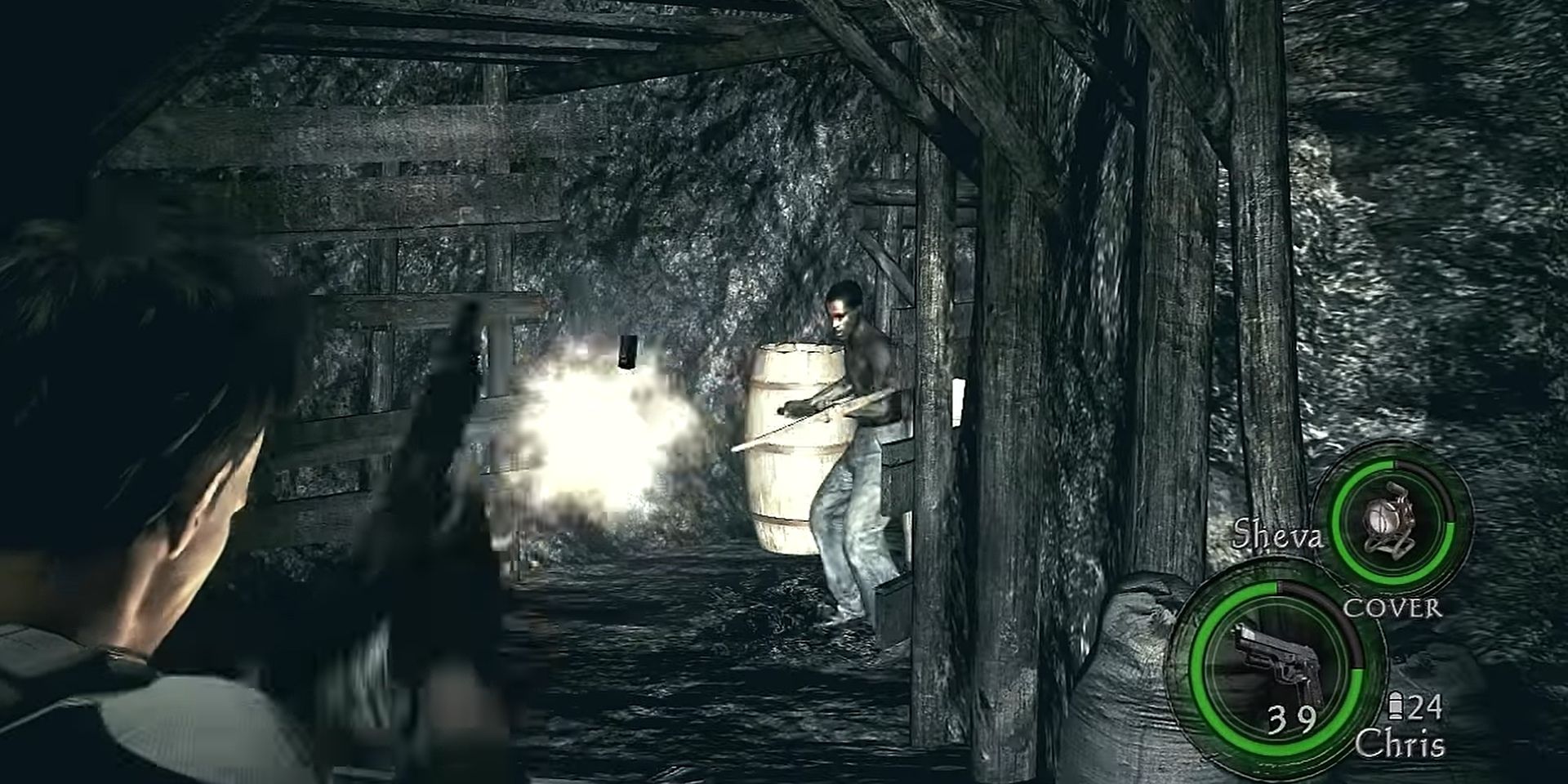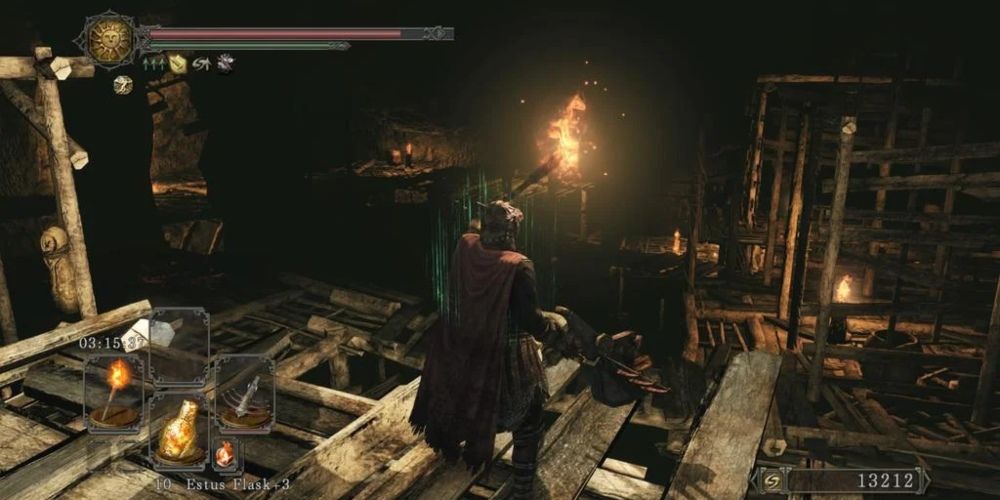Lighting is very important in video games. Good and realistic lighting is make-or-break for the graphics of many games. As with any medium, it's important to set the mood, tone, and visual style of a game. It also has important functions in gameplay, determining just what players can see.
Darkness is a useful tool for game developers, but some take it too far. Specific areas of their game are cast in near pitch-black. This can be to provide a new element in gameplay, to alter the mood, or simply for story reasons. As effective as darkness can be, some games use it in ways that make specific sections unpleasant to play.
9 Doom 3's Hell Specifically Needed Fixing
Doom 3 is intentionally a darker game than its forerunners. It's designed more in line with survival horror than the action horror of the previous two entries. To that end, the entire game is quite dark, and the player cannot wield a gun and flashlight at the same time. The Hell level takes things one step further.
The player is specifically teleported there, losing their equipment. The entire environment is almost black. As such, players have to navigate without light, barely able to see. The earliest mods for the game included more ways for the player to light the world up. The BFG Edition re-release specifically gave players a rechargeable shoulder-mounted light, alleviating Hell's problems somewhat.
8 The Tomb Of The Giants Has Literally No Lighting
Dark Souls as a whole is gloomy. Only select sections, such as Anor Londo, are at all well-lit. The entire game is about the oncoming dark, so it is appropriate. One area takes things further than most players like. Late in the game, the player goes to the Tomb of the Giants. The unique gimmick of the area is that it has no light sources at all.
The entire area is pitch-black, and the player can see barely a meter around them. The level's intention is that players get one of a select few items that light the area, and make their way slowly. The level is infamously unpopular, however. Most players simply sprint through, finding the quickest route down through trial and error.
7 Heisenberg's Factory's Darkness Doesn't Add Anything
Resident Evil: Village's Four Lords all live in very different areas. Lady Dimitrescu lives in a castle, Donna Beneviento lives in a house, and Salvatore Moreau lives in a mine. Karl Heisenberg, the last of the Four Lords, occupies a dingy factory off to one side. This factory is distinctly dark and dingy, poorly-lit in many areas.
However, this darkness doesn't add much to the atmosphere of the area. Resident Evil: Village can do horror perfectly well in daylight – as shown in the village itself and Castle Dimitrescu. It can also use darkness very effectively, such as in the Beneviento House. However, Heisenberg's factory occupies a dingy midpoint to little effect – and just makes searching it more tedious than it needs to be.
6 Cyberpunk 2077 Could Use A Flashlight In Some Areas
Cyberpunk 2077 is usually a brightly-lit game, fitting its overly urban and technological setting. Night City is often lit up regardless of the time of day. However, the game gets darker in its more desolate areas. Specific areas of Night City have no lighting, and neither do the Badlands outside.
This proves a problem at night. Visibility drops sharply, and there's very little the player can do. Despite its dark areas and night cycle, Cyberpunk 2077 doesn't have any ways to increase visibility. Cybernetic eyes lack night vision. A flashlight isn't available. As a result, many players have complained about the sheer darkness of some areas.
5 New Mombasa Streets Encourage The Player To Use Color-Destroying Night Vision
Some games that make extensive use of darkness give the player the means to overcome them. This often solves the problem. Not so in Halo 3: ODST, where it simply causes another one. New Mombasa Streets is the central section of Halo 3: ODST. It's a quasi-open world section for players to explore and unlock each level through.
It also serves as a visually-spectacular tour through New Mombasa, one of Earth's central cities in the Halo universe. The city is well-designed. It feels like both a soaring sci-fi metropolis and an intimate, noir-ish sprawl depending on the area. The relentless darkness of the area encourages players to use their night vision. This makes the entire city an unfortunate shade of yellow, ruining much of its excellent aesthetic.
4 Luigi's Mansion's Breaker Room Run Is Unpleasantly Dark
Luigi's Mansion spoofs the survival horror genre in a number of ways, including its use of lighting. Ghosts in a room cause the lights to go out. This forces the player to navigate by torchlight until they defeat them. Towards the end of the game, this gets exaggerated when every light in the house goes out.
The player has to reach the breaker room and turn the lights back on. The issue is that they have to do this in near-complete darkness. This makes navigation a challenge, and causes enemies to come out of almost nowhere to attack. It's one of the most stressful sections of an otherwise fairly light-hearted game.
3 Hard Rain's Storm Makes Visibility Drop
Left 4 Dead makes very careful use of its light. Most of its levels use a well-lit path to subconsciously guide players down the correct route. Much of the game isn't particularly dark. The developers chose to make the game lighter following playtester complaints. The Hard Rain campaign from Left 4 Dead 2, however, uses some of their original ideas.
The first half of the campaign is normal. The second half has the players retrace their steps, now in an utter deluge. The storm hampers movement, but it also sharply drops visibility. The two factors together make the game much harder, and make Hard Rain an infamous campaign among players.
2 Resident Evil 5's Mine Shaft Turns The Darkness Into An Escort Mission
Resident Evil 5's 2-2 level takes place largely in a giant mine shaft. Chris Redfield and Sheva Alomar have to explore the area, but neither has a conventional light source. Instead, one of them has to pick up an enormous lantern and use it to light their way. While using this lantern, a character cannot use any weapons.
The result is an escort mission. Because of the overt darkness, the player has to either protect their helpless AI partner or be helpless themselves. It's even worse in two-player because one player will always have to be helpless. The mine shaft isn't too hard to see in with the lantern, but the circumstances make it frustrating.
1 The Gutter Amplifies Dark Souls II's Lighting Problems
Dark Souls II attempts to use light and dark in a way no other game in the franchise does. Pitch-black areas are a staple of the game, with the player having to use torches to light their way. These areas are among the least popular in the game. The least popular by far is the Gutter.
Not only does the Gutter use the contentious torch mechanic, but it's also the most precarious area in the game. Players would risk falling often even if they could see. In the pitch black or the poorly lit, it simply becomes an exercise in tedium and frustration.

